Gallery Network
7 Questions for Carvalho Park Co-Founder Jennifer Carvalho on Art That ‘Speaks and Breathes’
The Brooklyn-based gallery recently doubled in size, offering new opportunities to exhibit increasingly ambitious projects.
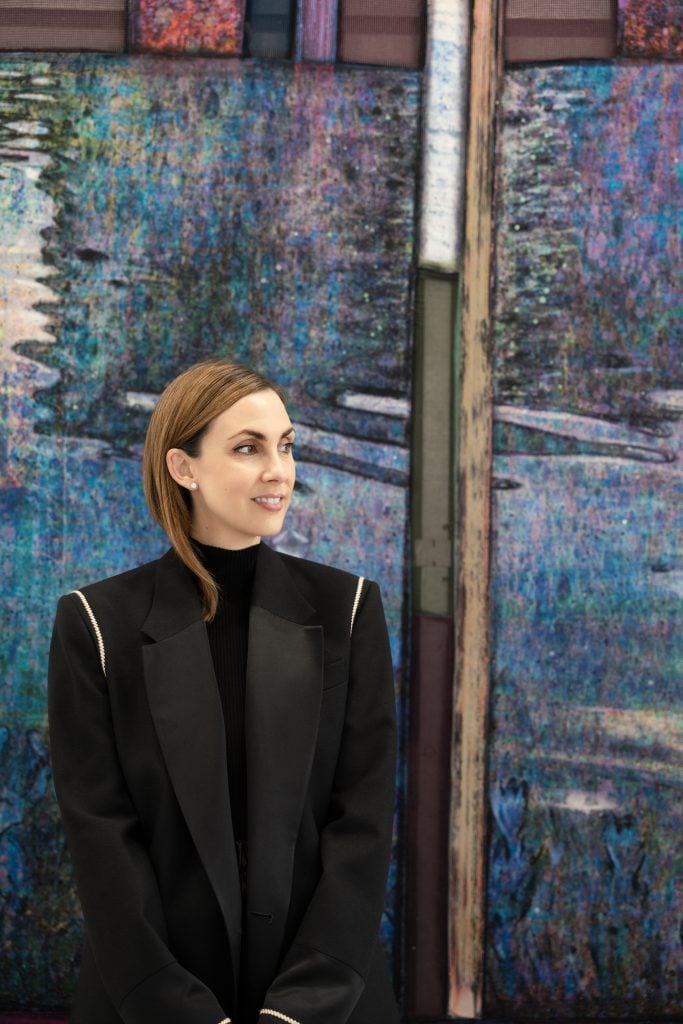
The Brooklyn-based gallery recently doubled in size, offering new opportunities to exhibit increasingly ambitious projects.

Artnet Gallery Network

Founded in 2019 by Jennifer Carvalho and Se Yoon Park, Carvalho Park has established itself within the New York cultural landscape for its unique, boundary-pushing cross-disciplinary program that focuses on experience and experimentation over traditional white cube presentations. With a dynamic roster of emerging and mid-career artists, Carvalho Park’s exhibition program in many ways offers a glimpse into a post-genre art world, wherein disciplines and mediums, rather than be the focus in and of themselves, are tools to activate the viewer’s environment.
Late last year, Carvalho Park underwent a massive renovation and expansion, taking over the adjacent building of the initial space. Today, coinciding with its five-year anniversary, the gallery holds double the exhibition space it did when first established, offering new opportunities to present innovative projects.
We reached out to Carvalho to learn more about the origins and the evolution of the gallery.
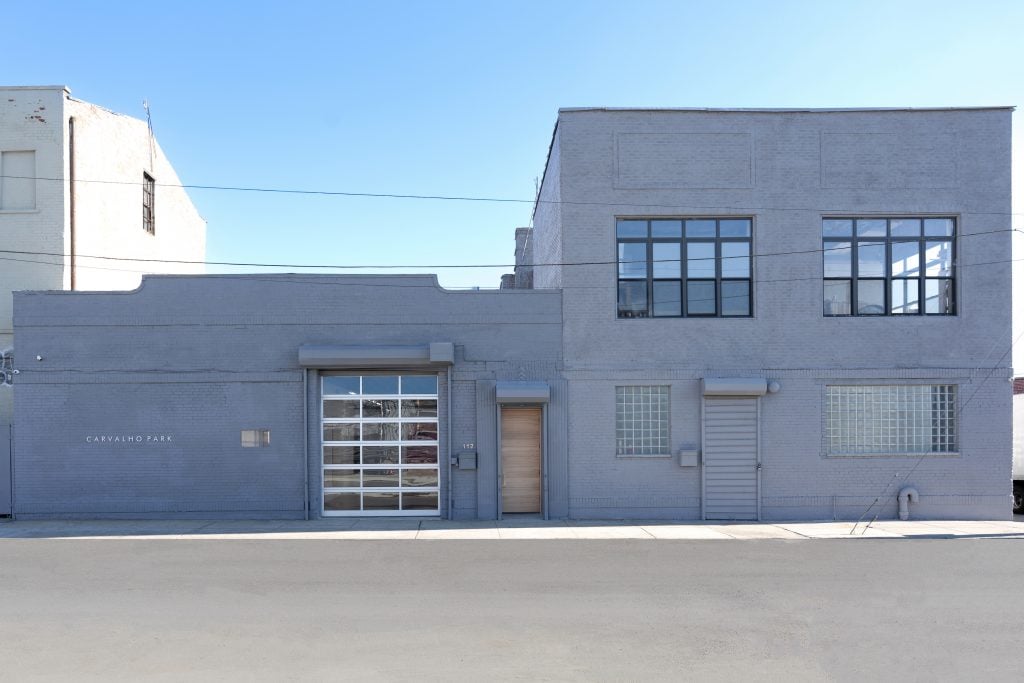
Carvalho Park’s newly expanded facade across 112 and 110 Waterbury Street in Brooklyn.
Can you tell us about your background and how this informs the gallery you founded?
My foundation is in the formal rigors of classical ballet, and in the cross-pollinated environment of the New York performing art world. After transitioning from the performing to visual arts, I worked at the Whitney Museum of American Art, MoMA PS1, and Christie’s, before founding my first gallery in Amsterdam, which mounted site-specific installations, and often elaborate worlds. These were the seeds. Upon returning to New York, I founded the Prelude Projects Fund, inviting choreographers, visual artists, and young composers to create total intersectional works. In pursuing spaces to house these performances, I met sculptor Se Yoon Park, and there was an immediate alignment, an instance of the right person, time, and place. Se Yoon, who has his own articulated practice, hails from the realm of architecture, having worked with leading figures in the field (Rem Koolhaas, Bjarke Ingels, Joshua Ramus, among them), before founding his sculpture studio.
A synthesis of our backgrounds in performing arts and architecture defines the distinct point-of-view that shapes Carvalho Park’s cross-disciplinary program. It’s one that privileges the sensorial experience of the art object and space, activating the viewer’s environment, and, ultimately, opening space for engagement and discourse between disciplines. A highly articulated program was essential to me from the start. The contemporary gallery landscape, especially in New York, is far too competitive otherwise.
How would you describe the gallery’s philosophy or ethos? How does this influence the artists you work with and show?
We’re drawn to interdisciplinary practices that challenge distinctions of increasingly fluid categorization of the visual and performing arts and craft realms, and to a meticulous dedication to materials and process. Concept is not enough. I’m interested in work that speaks and breathes, not the static, representational object.
At a time of acute global trauma, there is heightened relevancy in art that—through absorbing veils of color, or intense, diaphanous grounds, for example—can speak so tangibly of transcendence, reverence, fragility, and protection. I’m of the belief that abstraction is a more lucid, and often direct, vehicle to address, or encapsulate, the human condition. As the pendulum still hovers over figuration, I find the possibilities of what we can experience through abstraction to be entirely necessary. It asks more of the viewer, it takes you into its space, it engages sensorially—as a living thing.
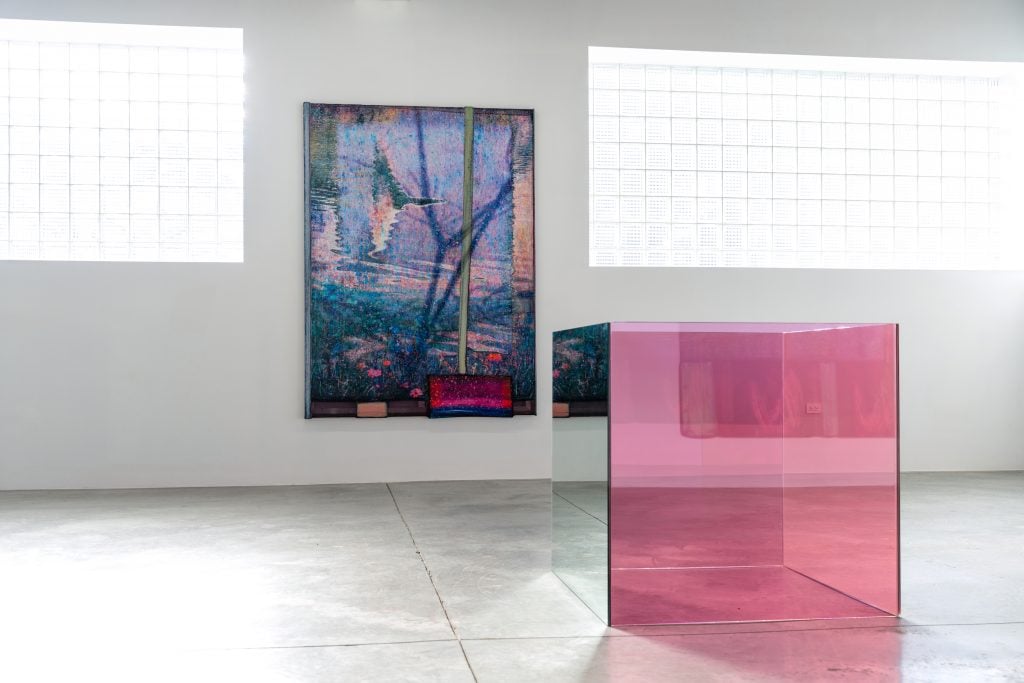
Installation view of “Merging Echoes” (2023/24), inaugural exhibition at 110 Waterbury Street. Courtesy of the artists and Carvalho Park, New York.
The gallery recently underwent a significant expansion. What went into this transformation, and how do you see it affecting your future program?
We had the rare chance to take the lease on the building adjacent to the gallery at 110 Waterbury Street in Brooklyn, launching into a gut renovation that turned a space akin to a dungeon into our newly expanded exhibition spaces, resulting in Carvalho Park doubling its scale and program. It was not in our sightline, and then suddenly we had three days to make this significant decision. We broke the floor, blew open windows, took down the dingy ceiling, to (thankfully) find beautifully preserved wood beams.
Flooded with light, the new space is dedicated to sculpture, installation, and performance—the first series to take place this summer—echoing Se Yoon’s and my foundations. Light, as a medium, is an important throughline of the gallery, in the way it activates space and brings an art object into its complex being. It’s a defining feature of the new gallery.
The inaugural show, “Merging Echoes,” featured a spectacular suite of works by Copenhagen-based multimedia artist, Kristian Touborg, surrounding a glass sculpture diptych by Quebec City-based installation artist, Florence Giroux Gravel. It was a remarkable experience to learn the space through these works—how the environment shifted in their presence.
Coinciding with the gallery’s five-year anniversary, looking back, what have been some of your favorite exhibitions or memorable moments thus far?
It was monumental for us to turn five as we doubled Carvalho Park’s program, especially at a time marked by frequent gallery closures and the widening chasm between voracious mega galleries and the fertile grounds of small ones. I feel the clarity of the gallery’s vision ushered in this expansion; it’s an exciting marker in our trajectory.
The moments, however, in our young history that radiate the strongest for me are those of artist-gallery representation. Artist relationships are both the backbone and driving force. All meaning in what we do is held in the endless hours devoted to these humans and practices. It’s my forever goal that the gallery and artists grow together. We don’t want to be an incubator for emerging artists, but a partner for long-term, careful growth. It’s remarkable when I learn of galleries who have never lost an artist. I recently read this about Sprüth Magers and Thaddeus Ropac—the longevity and trust, it’s a special thing.
Carvalho Park currently represents eight artists: Delphine Hennelly (Montréal), Yulia Iosilzon (London), Guillaume Linard Osorio (Paris), Se Yoon Park (New York, Seoul), Maximilian Rödel (Berlin), Rosalind Tallmadge (New York), Kristian Touborg (Copenhagen), and Rachel Mica Weiss (New York). As reflected in our artist roster, the gallery’s program is an international one, hosting the first New York exhibitions of many of its artists, while partnering with galleries abroad to develop artist visibility and nurture momentum.
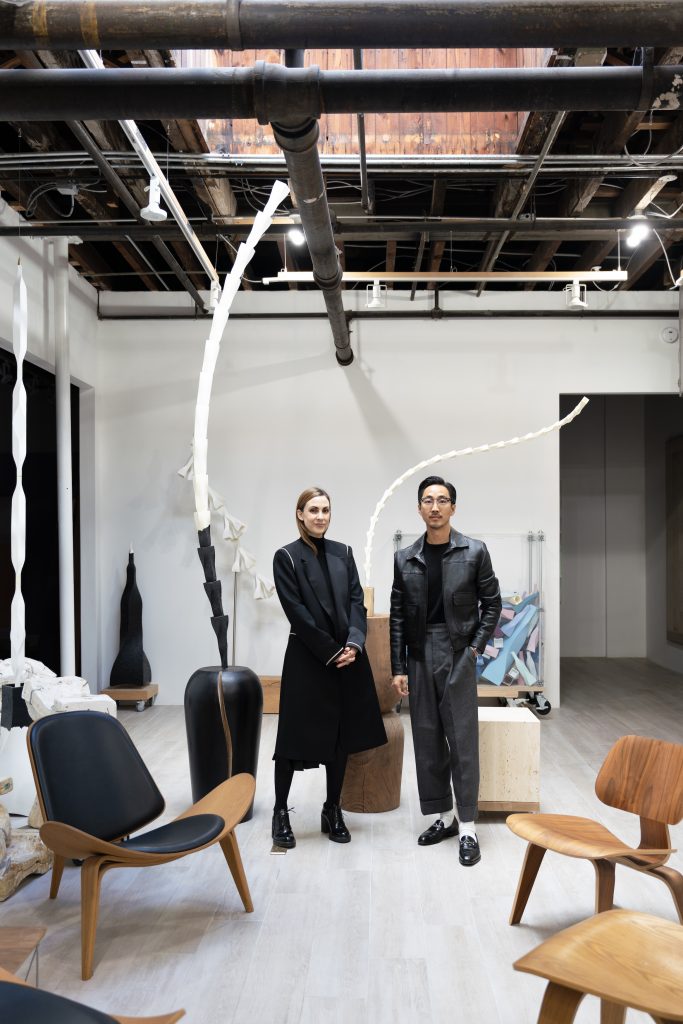
Carvalho Park Co-Founders Jennifer Carvalho and Se Yoon Park in Park’s sculpture studio.
Does the gallery’s location in East Williamsburg influence or inform how you approach either the gallery’s program or how it operates?
If you’re brave enough to face renovations, the warehouse buildings in the industrial landscape of North Brooklyn make for exquisite gallery spaces. Expansive space and an abundance of light absolutely allow us to approach our program and pursuits in a pure way, with far less compromise than if we were in Manhattan. And in turn, it allows our artists a luminous setting to realize more dimensional, ambitious bodies of work.
Further, what most people don’t know is that behind Carvalho Park’s main gallery spaces is partner Se Yoon Park’s sculpture studio, which is open to the public by request (you won’t be sorry you asked). His elaborate workshop, a wonder in itself, also extends into our new building.
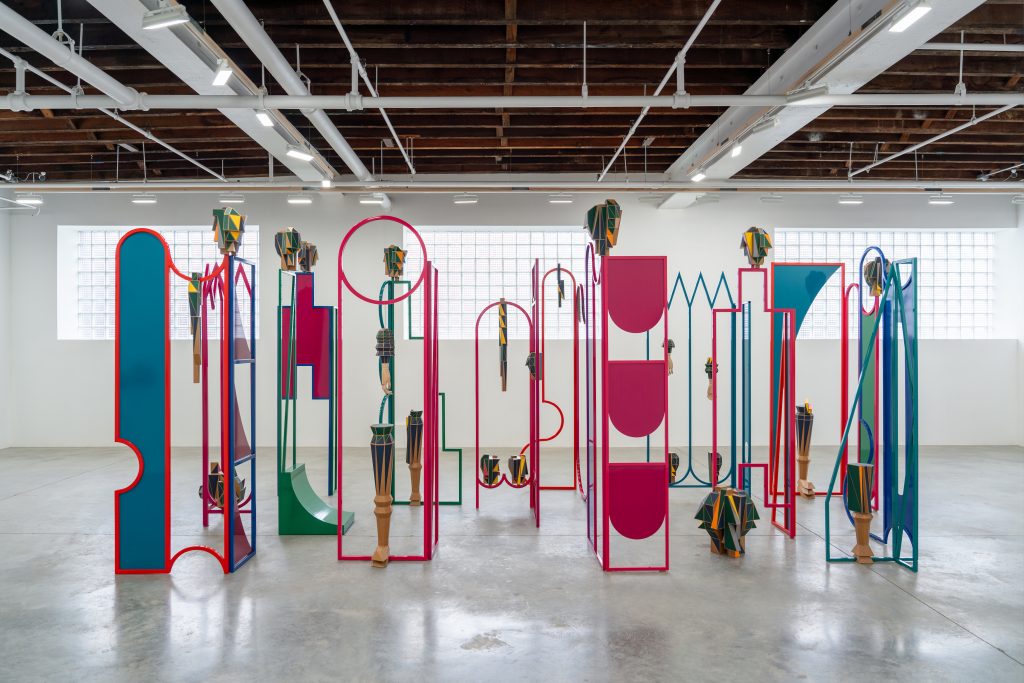
Installation view of “Jaiyoung Cho: Body and Bodies” (2024). Courtesy of the artist and Carvalho Park, New York.
Can you tell us about what you are currently showing at 110 and 112 Waterbury Street?
The new gallery allowed us to finally host the inaugural U.S. exhibition of Seoul-based sculptor Jaiyoung Cho, “Body & Bodies,” for which we were in conversation for three years. In it, the artist sets her stage with an assembly of standing, figural-scaled sculptures, each affixed with a kaleidoscopically facetted, paper structure. Through geometry alone, Cho touches upon the collective human experience in a way that is entirely unexpected. As the audience circles the installation, people keep telling us they expect to find their reflection. It’s fascinating.
At 112 Waterbury is “Ceremonies in Light,” a quietly powerful painting show with Maximilian Rödel (Berlin) and Julien Saudubray (Brussels). Like spirit guides, weightless zones of color across the gallery space envelope viewers into their worlds. But the works are highly complex and harness the phenomenology of sustained looking—they act upon you.
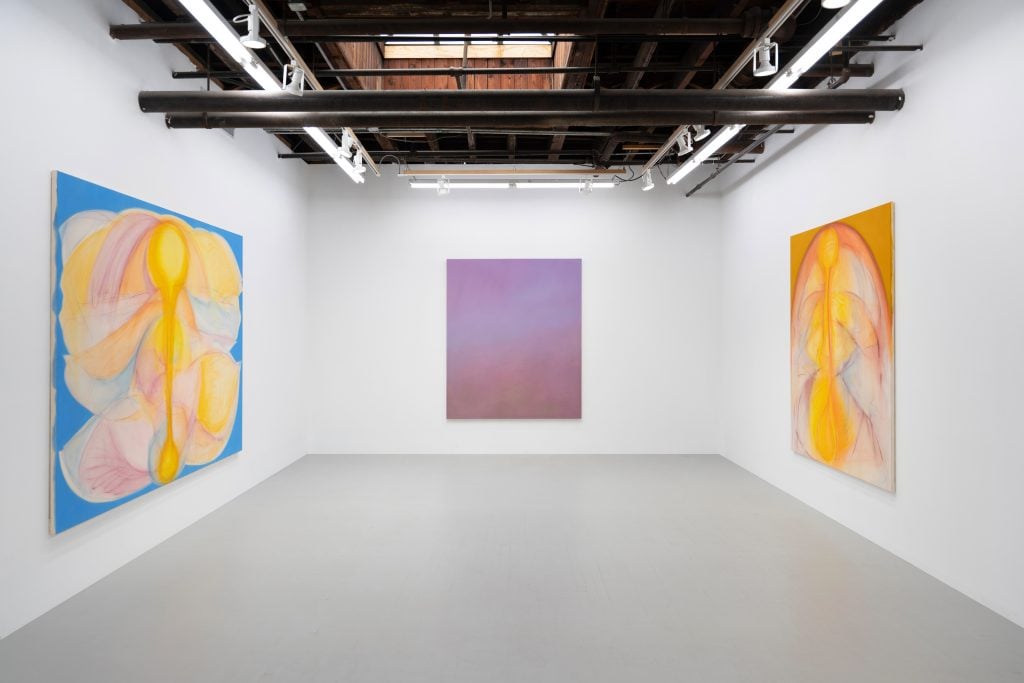
Installation view of Maximilian Rödel and Julien Saudubray: Ceremonies in Light” (2024). Courtesy of the artists and Carvalho Park, New York.
What’s next for Carvalho Park? Are there forthcoming exhibitions you can share with us?
This spring, we’ll hold New York-based, and newly represented, artist Rosalind Tallmadge’s first solo show with the gallery, titled “Aether.” Meticulously hand-cut stone on silk paintings form an alchemical, spellbinding series, with a site-specific textile installation hovering below the gallery’s skylight. Concurrently, we’ll host Warsaw-based artist Magdalena Karpinska’s debut U.S. exhibition. I acquired a tiny tempera on paper work by the artist several years ago, “Flower Jellyfish Clouds.” It’s one of the most significant works in my collection, a little jewel.
Paris-based artist Guillaume Linard Osorio, who is gaining exceptional and well-deserved momentum, will have his second solo show with the gallery in May, following a solo booth at Art Expo Chicago in April, and three European institutional exhibitions in 2023. His star is on the swift ascent, and this new body of work promises to give his practice strong recognition here.
And further off, but ever a part of our present, Se Yoon and I are working towards a future gallery location in Seoul (though one gallery expansion at a time!). Carvalho Park is one-half Korean, and while our artists have increasing visibility in Korea, it is also a second home for us. Se Yoon and I are committed to introducing and supporting the careers of Korean artists in New York, so you will see two Korean artists enter the gallery program this year.
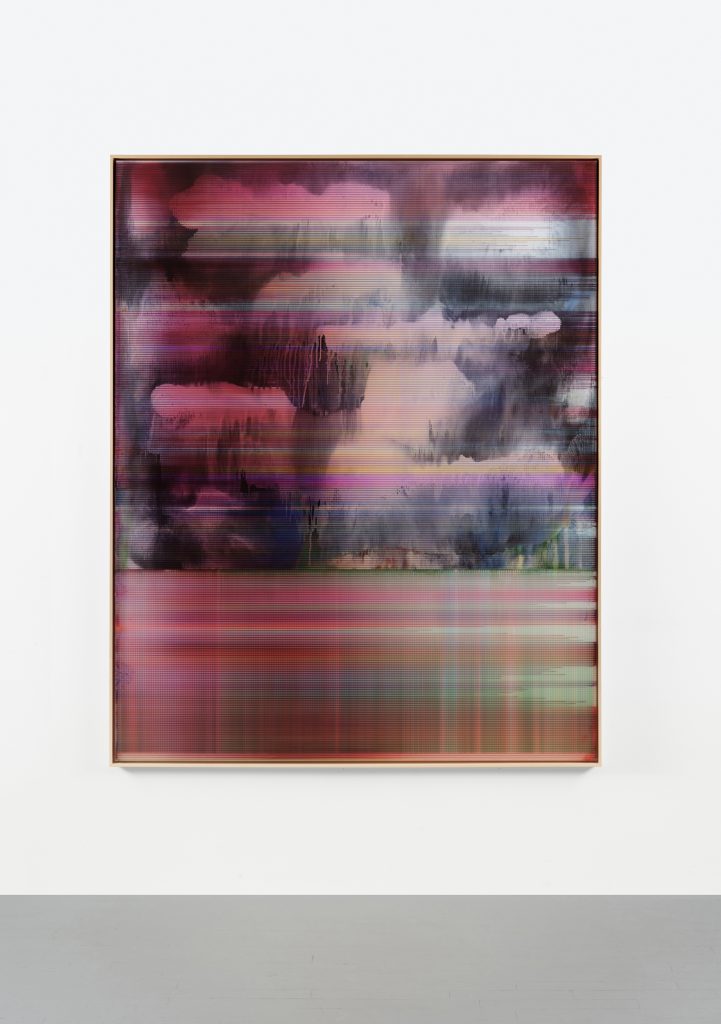
Guillaume Linard Osorio, Hypothetical Landscape 52 (2023). Photo: Tony Querrec. Courtesy of the artist and Carvalho Park, New York.
Explore Carvalho Park’s exhibition program here.